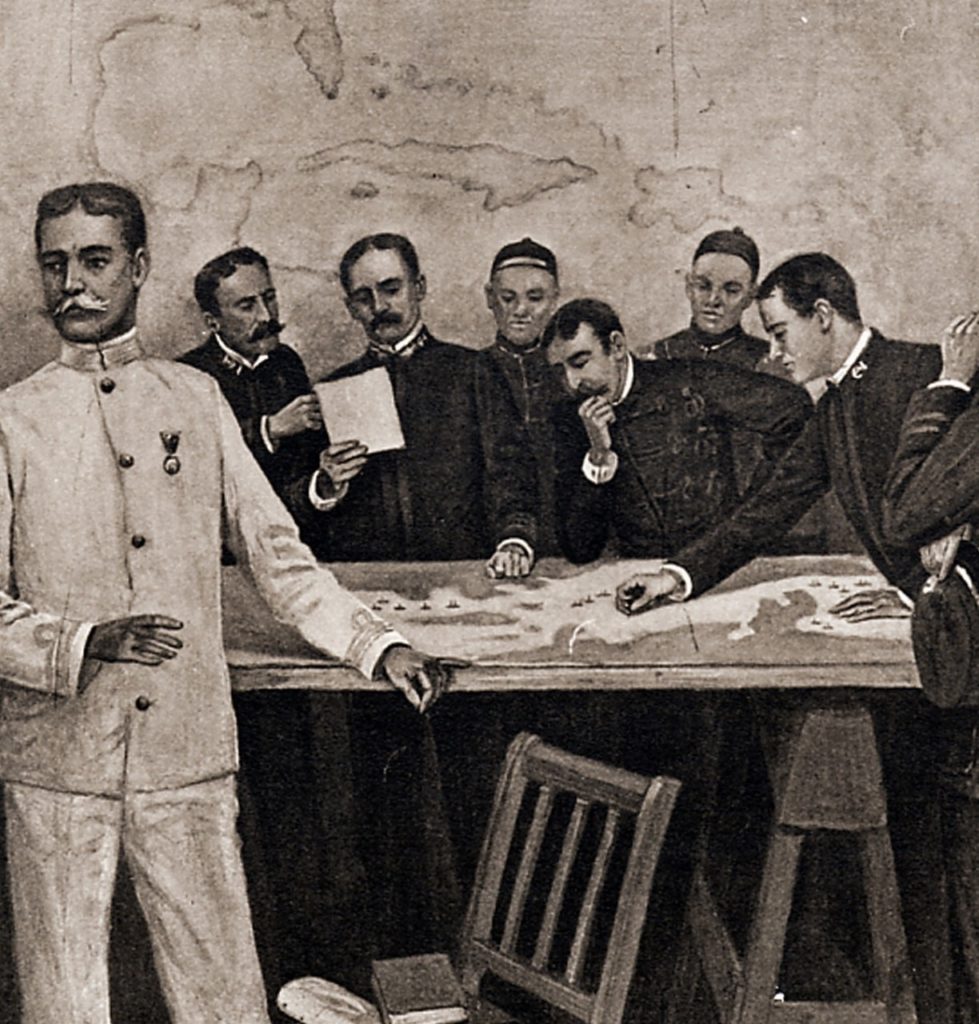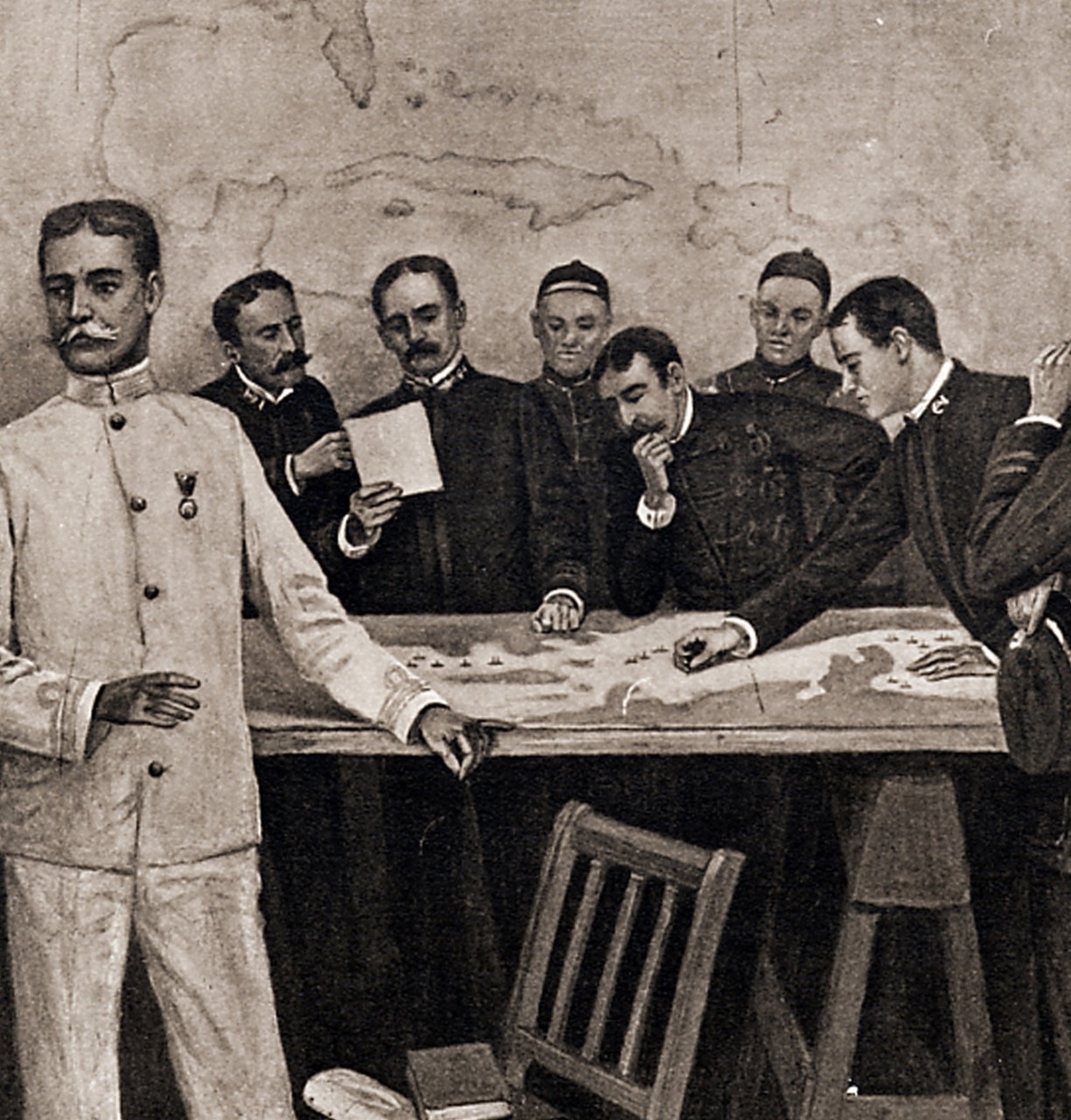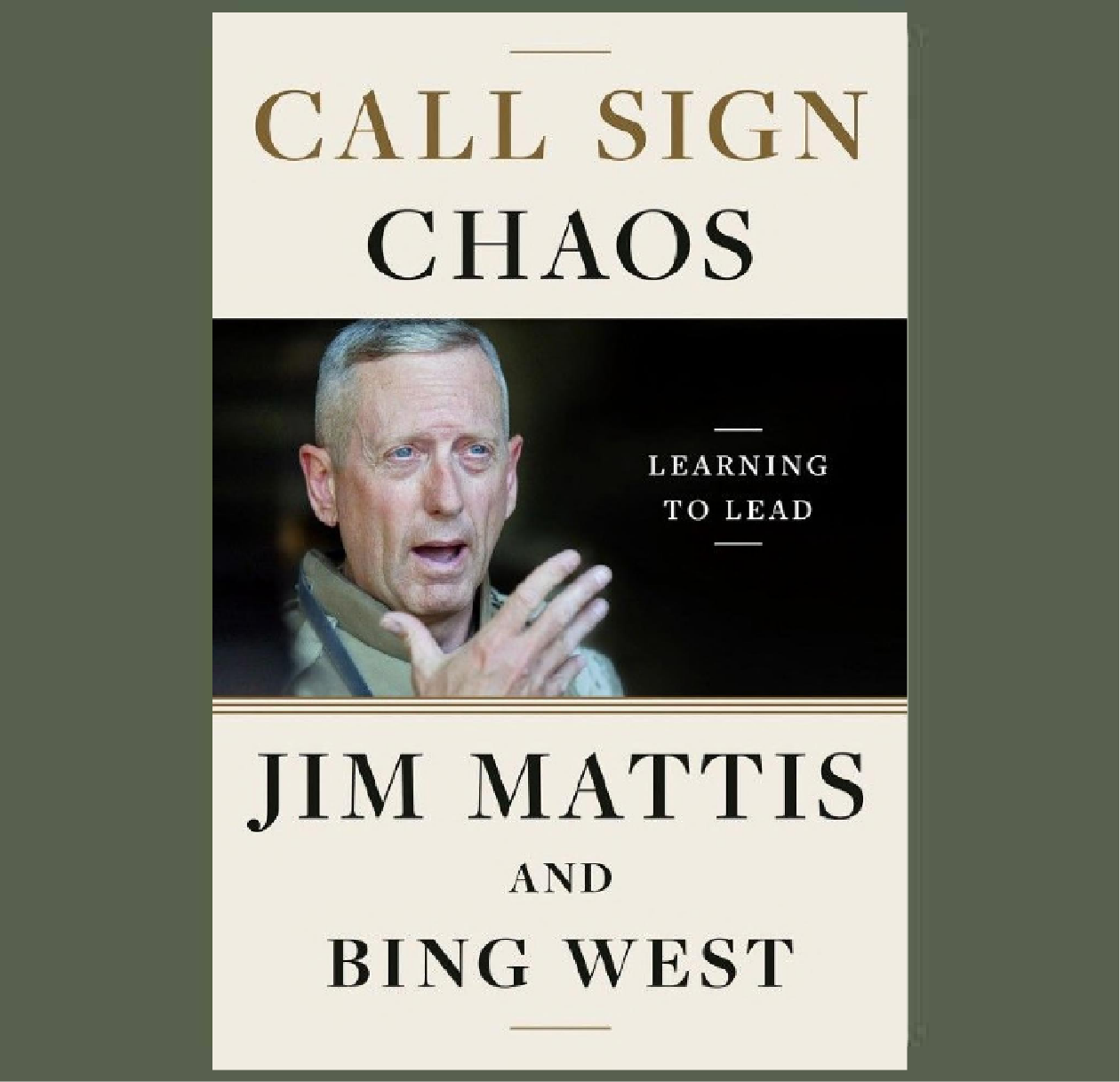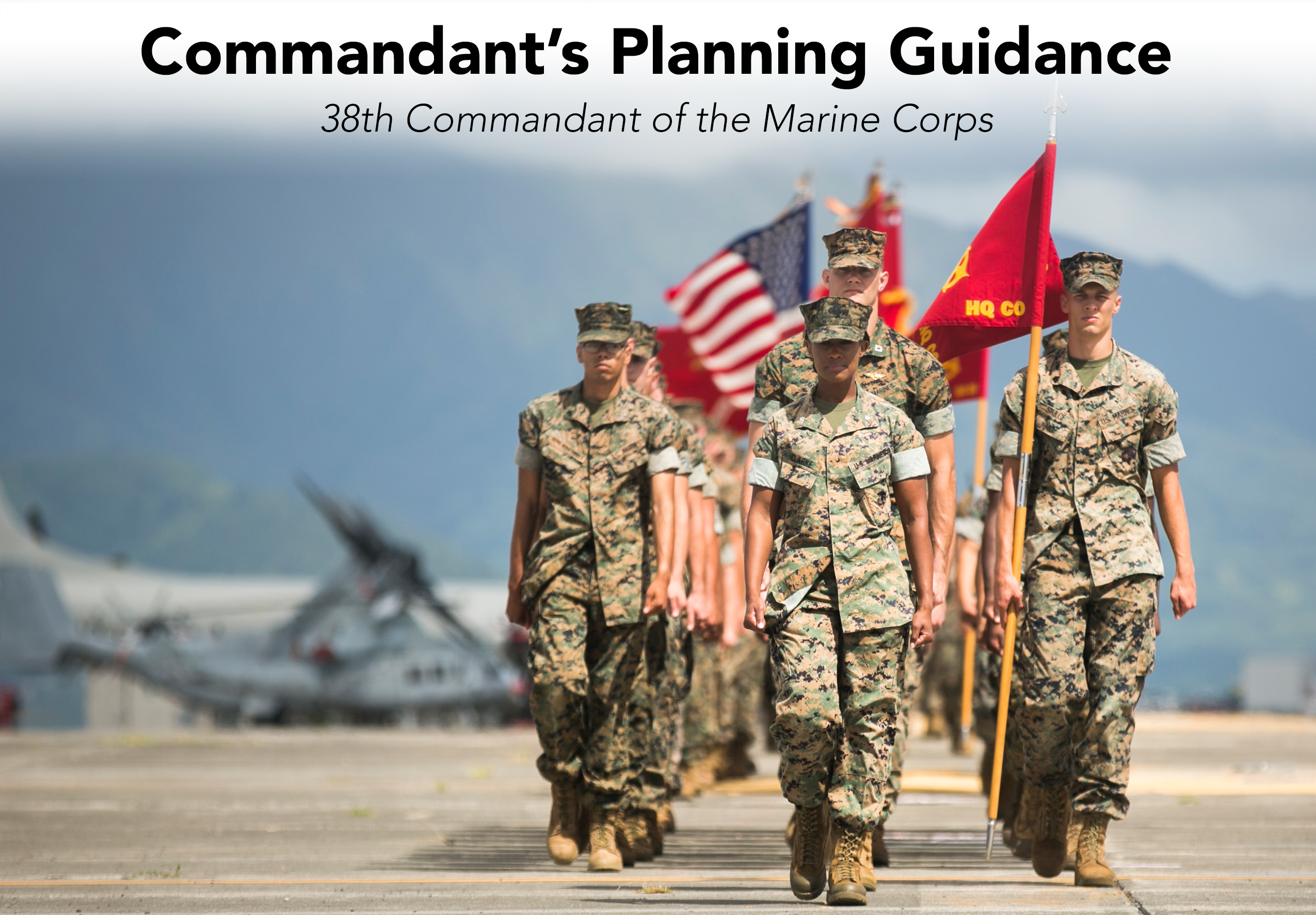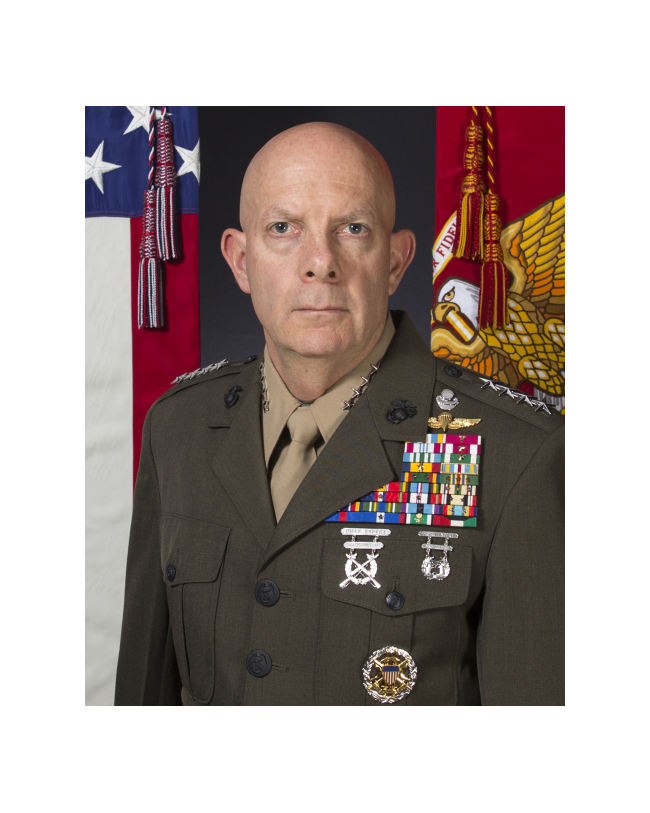reviewed by Col Chris Woodbridge, USMC(Ret)
CALL SIGN CHAOS: Learning to Lead. By Jim Mattis and Bing West. New York, NY: Random House, 2019.ISBN: 978-0812996838, 320 pp.
In his novel, El Club Dumas,1 Spanish author Arturo Perez-Reverte observes, “There are no innocent readers anymore … To the information the author provides he’ll always add his own.” To be honest, I am not an innocent reader of Call Sign Chaos: Learning to Lead. During my 30 years in the Marine Corps, I served directly under Gen James N. Mattis’ command three times, always two echelons down the chain of command: for example, me at platoon, him at battalion, me at battalion, him at division, and so forth. This is also the first time I reviewed a book that I appear in, however briefly. This is relevant only in that I was close to some of the events and many of the Marines mentioned in the book, and I bring my own views to the reading. What follows is not “the rest of the story,” but my opinions of the book shaped by my personal experiences.
I also need to add that writing this review has been challenging since a minor print and television media frenzy has grown around the General’s first interviews since his resignation as Secretary of Defense. The questions and discussion in these public interviews have all seemed to focus on everything but the book. A situation perhaps best illustrated by Jeffrey Goldberg in his article for the October edition of the Atlantic, wherein he describes the General’s departure from the current administration:
Here is where I am compelled to note that I did not learn any of these details from Mattis himself. Nor did I learn them from his new book, Call Sign Chaos: Learning to Lead, which he wrote with the former Marine officer Bing West. The book is an instructive and entertaining leadership manual for executives, managers, and military officers. Mattis is a gifted storyteller, and his advice will be useful to anyone who runs anything. The book is not, however, an account of his time in service to the 45th president.2
So,
if you expect a “tell-all expose” about the Office of the Secretary of Defense
in President Donald J. Trump’s administration, you will be disappointed. As the
General explains in his introduction, his resignation “is how my public service
ended; now I will tell you how it began.”
Furthermore, if you expect deeply touching insights into the character of Jim Mattis the man, you will also be disappointed by the book. Likewise, if you expect a chest-thumping first-person battle narrative from “Mad Dog Mattis,” you truly do not know who the General is. However, if you expect a collection of carefully curated biographical vignettes that carry fundamental lessons on leadership, then you will be pleased with this book. Above all, this work is worth every Marine’s time to read. Call Sign Chaos will also be of particular value to all who serve in the joint force, the Defense establishment, as well as students of national defense, strategy, history, and military affairs.
The book is organized into three parts. The first, “Direct Leadership,” uncovers the General’s “origin story” from youth in Washington State through early ship-board deployments to the Western Pacific and subsequent recruiting duty. This part continues through his first combat experiences as a lieutenant colonel while commanding a battalion in Operation DESERT STORM and concludes with his command of Task Force 58, the first U.S. and allied “brigade” into Afghanistan after the terrorist attacks of 11 September 2001. This first part demonstrates the General’s grounding in personal leadership at the tactical level where personal preparation— mental, physical, and spiritual—and immediate presence in the lives of the Marines you lead are crucial to success. As a lieutenant serving as a platoon commander in his battalion, we all learned from him the moral imperatives of leadership in war—lessons many of us took into our own commands in the sequels to the so-called First Gulf War.
The second part, “Executive Leadership,” begins by following General Mattis in combat again, covering his time in command of the First Marine Division during the initial invasion of Iraq and early stability and counter-insurgency operations through his assignments at MCCDC, I MEF, U.S. Joint Forces Command, and NATOs’ Supreme Allied Command for Transformation. Among this part’s vignettes are the details of an incident that has not appeared in the official histories of Operation IRAQI FREEDOM. Shocking and controversial at the time was the decision to relieve Col Joe D. Dowdy of command of RCT 1 during the “march up” to Baghdad. The General’s decision is described over three pages and it is clear he neither took the action lightly nor second-guessed his choice once made. Although General Mattis’ stated intent “involved speed as the top priority,” the commander of RCT 1 “expressed his heartfelt reluctance to lose any of his men by pushing at what might seem to be a reckless pace.” Col Dowdy was relieved immediately and replaced by one of the General’s most trusted subordinate leaders, then-Col John Toolan. As a lieutenant colonel, Toolan had served as the Operations Office, 7th Marines, when then-Colonel Mattis commanded the 7th Marine Regiment and was responsible for the “Chaos” callsign.
A second vignette continues a theme that resonates throughout the book: the frustration and squandered lives, resources, and opportunities for victory that attend upon political and strategic incoherence at the national level. Not unlike the missed opportunity to trap Osama Bin Laden and his Al Qaeda forces at Tora Bora in 2002, described at the end or “Direct Leadership,” what the General refers to as his worst day in the Marine Corps came in 2004 during the abortive first battle of Fallujah:
I believed I had let my men down, having failed to prevent the attack in the first place and subsequently failing to prevent a stop once we were deep inside the city. It was a tough time for me, because higher-level decisions had cost us lives, but now was not the time to go inward. You must always keep fighting for those who are still with you.
The third part, entitled “Strategic Leadership,” deals exclusively with the General’s time commanding U.S. CENTCOM. Since the establishment of CENTCOM in 1983, only fourteen men have served as the geographic combatant commander for this complex, dynamic, and volatile area of responsibility. This period of the General’s service is probably the least relatable for even the most experienced, mature, and well-read military reader. The book does a credible job of breaking down this barrier to understanding by detailing the daily routine, or personal battle rhythm, the General demanded of himself and his staff. The sheer intellectual stamina and personal discipline required to operate at this level is a testament to the exceptional character of such leaders. Sadly, much of this section describes the friction and frustration born from failures to frame and articulate a coherent national strategy for the region.
In addition to the precipitous withdrawal of U.S. forces from Iraq and restrictions on “boots on the ground” troop strength in Afghanistan, this period was marked by the wave of popular uprisings across North Africa and the Middle East that came to be known as the “Arab Spring.” Although heralded by some as the ushering in liberal democracy in the Arab world, the General and others such as Secretary of Defense Robert Gates were
wary about the consequences of the uprising … Democracy was not preordained to emerge from what was unfolding, I didn’t have a crystal ball but a quick glance at history reminded me that every society has its own carrying capacity for making change. I was concerned that if traditional Arab societies proved unable to assimilate sudden political change, something worse would erupt.
Throughout this dynamic time, the General travelled constantly throughout the region employing three lines of effort:
First, I reassured out traditional friends that we stood with them in defending their security against the terrorist threat, Second, I made it clear that we would not tolerate Iranian incursion violating their territorial integrity. Third, I reinforced our ambassadors’ efforts and encouraged regional leaders to be responsive to and inclusive of all their people. I saw this all as buying time for them to make reforms aligned with their societies’ carry capacity.
The
book further illustrates this point regarding “carrying capacity” for change by
drawing the stark contrasts between Egypt and Syria: “To see what might have happened
had the Egyptian military not acquiesced to the will of millions of Egyptians
in the streets, we need only look to Syria.” Here again, the theme of strategic
incoherence at the national level plays out through the period of “red lines”
and inaction. Consequently, “And American lives today with the consequences of
emboldened adversaries and shaken allies.”
General Mattis took command of CENTCOM with two threats in mind: “stateless Sunni Islamist terrorists, and the revolutionary Shiite regime in Iran. By the end of Strategic Leadership, it was the situation with Iran that eroded the General’s trust and “traction” within the Obama administration. In December 2012, the General departed CENTCOM “a region aflame and in disarray. The lack of integrated regional strategy had left us adrift and out friends confused. We were offering no leadership or direction.”
The book closes with a section titled, “Reflections.” This section is close to a tutorial on national defense and military science. The first part, “Lethality as a Metric,” is based on a deep understanding of the unchanging nature of war and the General’s years of experience leading forces in combat:
The need for lethality must be the measuring stick against which we evaluate the efficacy of our military. By aligning the entire military enterprise … to the goal of compounding lethality, we best deter adversaries, or … win at the lowest cost to our troops’ lives.
Reflections’ second part is “The Art of Leading,” which, as the title suggest, provides a first person description of the General’s personal leadership and how he drew upon the Marine Corps way of war in his own authentic warfighting style. This section expands upon two recurring themes from throughout the book. First is the gratitude for the Vietnam veteran Marines who trained and mentored the General in his formative years in the Service. This debt is expressed repeatedly in the book and is best stated here: “I had been shaped and sharpened by the rough whetstone of those veterans, mentored by sergeants and captains who had slogged through rice paddies and jungles fighting a tough enemy every foot of the way.” The second theme is, of course, the importance of reading history and “studying one’s craft.” His advice here is clear, if aspirational, for many: “If you haven’t read hundreds of books, learning from others who went before you, you are functionally illiterate—you can’t coach, and you can’t lead.”
The final part of “Reflections” and the last paragraphs of the book is “The Need for Allies.” Perhaps added here, for those readers who “skip to the end,” these paragraphs are the closest to discussing the General’s service as the Secretary of Defense. The advice here is broad and addressed to those who make national policy: “History is compelling. Nations with allies thrive and those without wither.”
Call Sign Chaos is an important addition to any professional military reading list. Each section of the book will resonate more with different readers based on their own level of leadership and years of service. In this manner, the book is crafted to add as much value for sergeants and captains and it does for colonels, senior SNCOs, and generals as well as elected and appointed policy makers. Credit must also go to co-author “Bing” West and editor Will Murphy. This writing team has produced a thoroughly useful handbook for leaders housed inside an engaging and uniquely authentic memoir.
Notes
1. Arturo Perez-Riverte, The Club Dumas, translated by Sonia
Soto, (New York, NY: Houghton Mifflin Harcourt, 1996).
2. Jeffrey Goldberg,
“The Man Who Couldn’t Take It Anymore,” The
Atlantic, (Online: October 2019), available at https://www.theatlantic.com.
